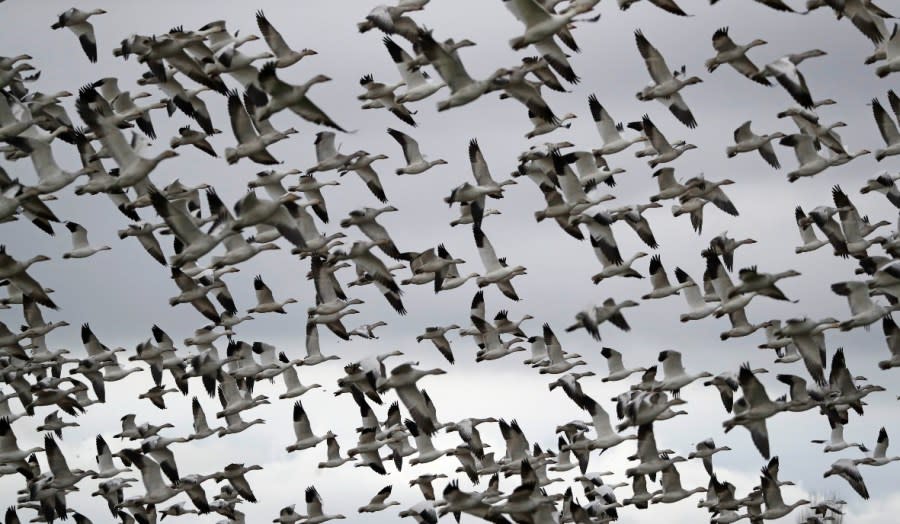Bird flu: Scientists watching migratory birds, seals amid outbreak

Scientists are watching migratory birds, cattle and marine mammals across the Americas amid an outbreak of highly pathogenic avian flu (HPAI) that has infected at least one person.
Last week, a dairy worker in Texas contracted H5N1, a bird flu variant, from infected cattle — the second such case ever in the U.S. and the first time bird flu has infected cattle.
Cases in cattle have been detected in a handful of states from Texas to Michigan, though it’s not known exactly how the virus has spread so effectively in herds. That has scientists and public health officials keeping a close eye on potential vectors.
“If evidence suggests down the road that there’s sustained mammal-to-mammal transmission, then you gotta kinda wonder ‘how do you deal with that?’” Bryan Richards, emerging disease coordinator at the U.S. Geological Survey National Wildlife Health Center, told The Hill this week.
According to the U.S. Department of Agriculture, bird flu has been detected in more than 200 mammals in the United States alone. Though there are documented cases, mammal-to-mammal transmission is historically very rare and limited in scope.
Usually, if the avian flu infects a random mammal, it’s a “spillover, dead-end” event, Richards said. For example, animals might eat a dead, infected bird and then succumb to the virus alone.
But epidemics have broken out in marine mammals like seals and sea lions in North America, South America and other parts of the world.
The primary vector for spread to cattle, seals, sea lions and other mammals has been migratory birds, which “shed” the virus wherever they go.
“Some of these birds migrate as far southward as South America, and we’ve seen spillover from wild birds to mammals in South America, and even in penguins in Antarctica,” Richards said.
According to the Richards, the majority of new bird flu infections to mammals have been attributable to exposure to infected wild birds like goose, grackle, gull and duck species.
Because infection of cattle is unprecedented, whereas infection of poultry facilities is not, “the poultry industry has learned a lot about biosecurity, and the dairy industry could learn,” Richards said.
Though the infection of mammals like cattle and seals likely originated with infected birds, the volume of infections is hard to explain without mammal-to-mammal transmission, Richards said.
The virus’s abilities are “an open question,” but the scientific community is “not ready to be an alarmist,” he said.
“[It’s] not at all beyond belief that the affected adults [are eating dead birds] as a very convenient snack. But when you’re talking about [their offspring] that are not old enough to consume dead birds, now you have to wonder how they got infected,” he said.
The high-density living conditions of cattle could warrant measures similar to the “depopulation” of 2 million infected chickens ordered by the Texas Department of Agriculture last week, Richards said.
“At least right now, the data does not suggest this is a rapidly progressing situation — the data is incomplete at this time; we need to keep watching,” Richards said.
The Centers for Disease Control and Prevention asked state public health officials Friday to create rapid response plans for testing and treatment if more cases in humans emerge.
For the latest news, weather, sports, and streaming video, head to The Hill.

